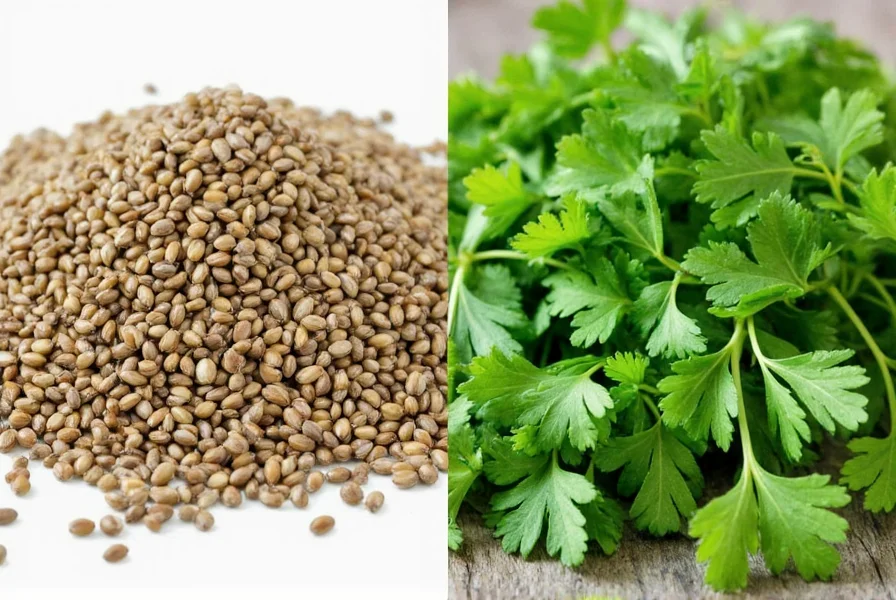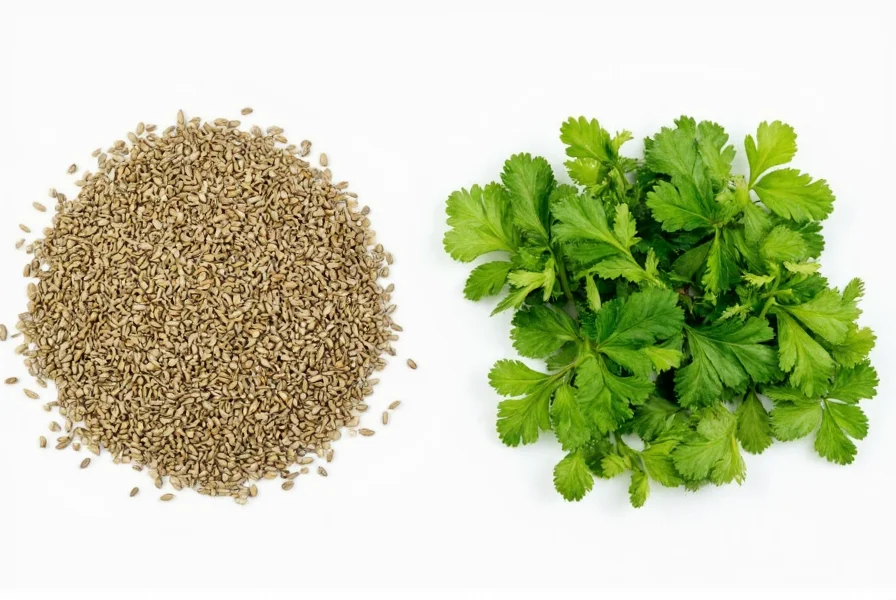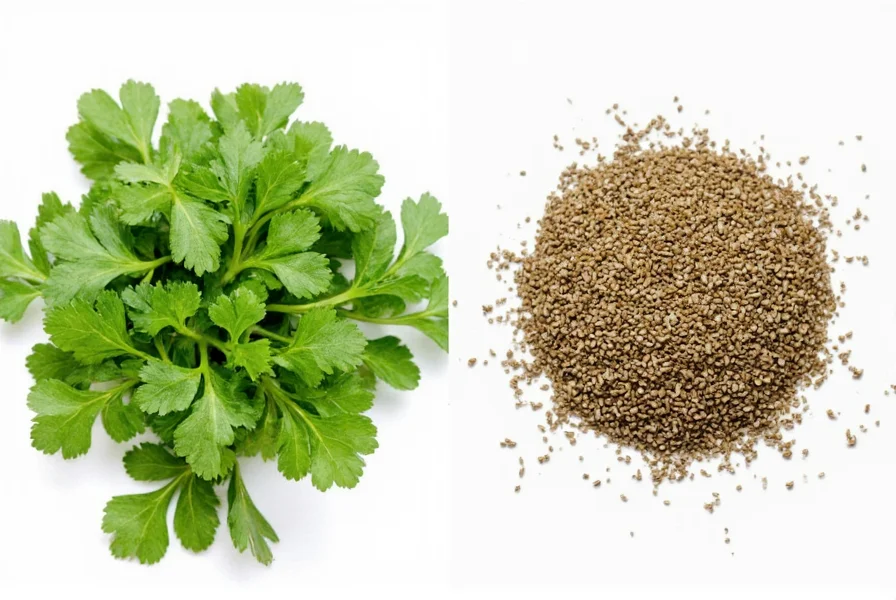Many home cooks and even experienced chefs find themselves confused by the relationship between coriander seeds and cilantro. This confusion stems from regional naming differences and the fact that these two ingredients, while coming from the same plant, couldn't be more different in flavor, texture, and culinary application. Let's clarify this common kitchen conundrum once and for all.
The Botanical Connection: Same Plant, Different Parts
Coriander (Coriandrum sativum) is an annual herb that produces both the fresh green leaves we call cilantro and the round, tan seeds known as coriander seeds. The plant follows a natural growth cycle: first producing leaves, then white flowers, and finally the seeds. When the seeds mature and dry, they become the spice we know as coriander seeds, while the fresh green parts harvested before flowering are cilantro.
This botanical reality explains why recipes might call for "coriander" in some contexts and "cilantro" in others—it's all about which part of the plant the recipe requires. Understanding the difference between coriander seeds vs cilantro prevents recipe disasters and helps you make appropriate substitutions when necessary.
Flavor Profile Comparison
The most significant difference between coriander seeds vs cilantro lies in their flavor profiles. Despite coming from the same plant, these two components offer dramatically different taste experiences:
| Characteristic | Coriander Seeds | Cilantro (Fresh Leaves) |
|---|---|---|
| Primary Flavor Notes | Warm, citrusy, slightly sweet, with lemon and sage undertones | Bright, citrusy, fresh, with some people detecting a soapy quality |
| Aroma | Earthy, nutty, with subtle floral notes | Grassy, fresh, intensely herbal |
| Texture | Hard, round seeds (whole) or fine powder (ground) | Tender, delicate leaves and thin stems |
| Heat Response | Flavor deepens and becomes more complex when toasted | Flavor diminishes quickly with heat; best added at the end of cooking |
| Shelf Life | Months to years when stored properly | Days to a week when refrigerated |
Regional Naming Differences Explained
The confusion between coriander seeds vs cilantro largely stems from regional terminology differences. In the United States and Canada, the fresh leaves are called "cilantro" while the seeds are called "coriander." However, in the UK, Australia, India, and most other English-speaking countries outside North America, the fresh leaves AND the seeds are both referred to as "coriander." The term "cilantro" is rarely used outside North America.
This naming discrepancy explains why many international recipes can cause confusion for home cooks. When reading a British cookbook that calls for "coriander," you need to determine from context whether it means the fresh herb or the dried seeds. Understanding these regional naming conventions for coriander seeds vs cilantro prevents recipe mishaps and helps when following global cuisine instructions.
Culinary Applications Around the World
Both components of the coriander plant feature prominently in world cuisines, but they serve very different purposes:
Coriander seeds are essential in spice blends worldwide. They form the backbone of Indian garam masala and curry powders, Middle Eastern dukkah, and North African ras el hanout. Toasted and ground coriander seeds add depth to sausages, breads, pickling brines, and roasted vegetable dishes. Their warm, earthy flavor stands up well to long cooking times, making them ideal for stews, braises, and slow-cooked dishes.
Cilantro (the fresh leaves) shines in dishes where bright, fresh flavors are desired. It's indispensable in Mexican salsas and guacamole, Southeast Asian salads and noodle dishes, Indian chutneys, and Middle Eastern tabbouleh. Unlike the seeds, fresh cilantro loses its distinctive flavor when exposed to heat, so chefs typically add it as a finishing garnish rather than cooking it extensively.
Can You Substitute Coriander Seeds for Cilantro (and Vice Versa)?
This is perhaps the most common question regarding coriander seeds vs cilantro: can you substitute one for the other? The short answer is no—not directly. Their flavor profiles differ too significantly to work as direct replacements.
If you need fresh cilantro but only have coriander seeds, you're better off using another fresh herb like parsley or basil rather than trying to substitute the seeds. Conversely, if a recipe calls for coriander seeds but you only have fresh cilantro, no amount of fresh herb will replicate the warm, earthy notes of the toasted seeds.
However, if you're in a pinch, here are some practical substitution approaches:
- For fresh cilantro: Try flat-leaf parsley with a squeeze of lime juice to mimic cilantro's bright notes
- For coriander seeds: Ground cumin (use half the amount) can provide some earthiness, though the flavor profile differs
- For cilantro in cooked dishes: Add a small amount of ground coriander near the end of cooking to capture some fresh notes
Nutritional Differences Between Coriander Seeds and Cilantro
While both come from the same plant, coriander seeds and cilantro offer different nutritional profiles due to their different forms and water content:
Coriander seeds are nutritionally dense, providing significant amounts of dietary fiber, iron, magnesium, and calcium. Two tablespoons of coriander seeds contain approximately 30 calories, 2 grams of fiber, and notable amounts of antioxidants. The seeds also contain essential oils with potential digestive benefits.
Fresh cilantro is mostly water (92%) but contains vitamins A, C, and K, along with small amounts of potassium and manganese. One cup of chopped cilantro has only about 1 calorie but offers phytonutrients with potential antioxidant properties. The fresh herb also contains compounds that may help with heavy metal detoxification.

Storage and Preparation Tips
Proper storage and preparation maximize the flavor of both coriander components:
For coriander seeds: Store whole seeds in an airtight container away from light and heat. They'll maintain peak flavor for 6-12 months. For maximum flavor, toast whole seeds in a dry skillet over medium heat for 1-2 minutes until fragrant, then grind as needed. Pre-ground coriander loses its volatile oils quickly, so grinding your own makes a noticeable difference in flavor intensity.
For fresh cilantro: Trim the stems and place the bunch in a glass with an inch of water, like flowers, then cover loosely with a plastic bag and refrigerate. Change the water every few days. Alternatively, wash and dry the leaves thoroughly, then store in an airtight container lined with paper towels. Use within 5-7 days for best flavor. Never freeze fresh cilantro as it becomes mushy, though you can freeze it in oil or water for cooked applications.

Why the Flavor Difference Matters in Cooking
Understanding the distinction between coriander seeds vs cilantro isn't just botanical trivia—it directly impacts your cooking results. The seeds' warm, earthy notes provide foundational flavor in spice blends and slow-cooked dishes, while fresh cilantro's bright, citrusy punch works best as a finishing element.
Professional chefs leverage both components of the coriander plant in sophisticated ways. For example, in Indian cuisine, recipes might call for both ground coriander (from the seeds) in the curry base AND fresh cilantro as a garnish. This creates a layered flavor experience that showcases the plant's versatility. Similarly, some Middle Eastern dishes use toasted coriander seeds in meat mixtures while garnishing with fresh cilantro for contrast.
When following recipes from different culinary traditions, pay close attention to whether they specify "coriander" (which could mean seeds or leaves depending on origin) or "cilantro" (which always means the fresh leaves in North American contexts). This attention to detail makes the difference between an authentic flavor profile and a confused culinary experiment.











 浙公网安备
33010002000092号
浙公网安备
33010002000092号 浙B2-20120091-4
浙B2-20120091-4